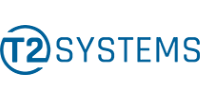T2 Systems: Future Trends in Campus Parking

For colleges and universities, transportation and parking solutions are key to people moving—whether it be students going to class, faculty and staff heading to work, or visitors coming to campus for a special event. From selling thousands of permits in a single day and enforcing dozens of lots and garages to maintaining hardware, gates, handhelds, and more, parking staff at colleges and universities have a lot on their plates. And they must manage it all while providing quality customer service and a seamless experience.
With the ever-growing demand for parking spaces and the increasing challenges posed by traffic congestion and pollution, it’s essential to explore emerging trends and technologies in the parking industry to address these issues effectively and efficiently.
Current Challenges in Campus Parking
One of the most pressing challenges in campus parking is the limited space availability. As universities expand and enrollments increase, the demand for parking spots is often greater than the supply. This scarcity leads to frustration among students, staff, and faculty who struggle to find parking, especially during peak hours.
The constant influx of vehicles on campus contributes to traffic congestion and environmental pollution. The long queues of cars waiting to find parking waste time and emit harmful pollutants into the atmosphere, negatively impacting air quality and sustainability efforts.
In the aftermath of the COVID-19 pandemic, many colleges and universities began recognizing inefficient use of their parking spaces. Students, staff, and faculty no longer visit campus daily, as remote work arrangements and virtual classes are the norm. Therefore, commuters seek parking for specific days and times—not a permit for an entire month, semester, or year. In turn, parking operations seek ways to accommodate customers while steadying revenue streams and filling spaces.
Emerging Trends in Campus Parking
Campuses are embracing sustainability by installing electric vehicle (EV) charging stations and integrating green parking infrastructure such as solar panels and permeable pavement. These initiatives support environmentally friendly transportation and reduce the carbon footprint of campus parking facilities. Many universities are planning how electric vehicles will reshape their parking and transportation departments and infrastructure within the next five to eight years. Not only do campuses have to prepare for students, staff, faculty, and visitors to have a place to charge, they need to begin considering what it will take to transition their operational fleet to electric vehicles.
The integration of autonomous vehicles into campus transportation systems promises to revolutionize the expectations for integrated mobility and can ease the effects of traffic congestion. The introduction of autonomous vehicles also brings unique changes. Colleges and universities must consider how introducing these vehicles will impact traffic congestion on campus.
Technology enables the deployment of intelligent parking management systems that provide real-time updates on the parking operation. Fixed license plate recognition combines parking hardware and software to provide enhanced access and revenue control while providing a contactless entry experience for parkers. Mobile license plate recognition technology takes enforcement to the next level by streamlining data and making issuing citations as easy as pressing a button. Parking applications allow users to reserve parking spots in advance and make payments seamlessly, streamlining the parking experience, reducing congestion, and increasing revenue.
Colleges and universities are promoting shared mobility options such as carpooling and ridesharing programs to reduce the number of single-occupancy vehicles on campus. Bike-sharing initiatives also provide convenient alternatives for short-distance travel, further alleviating parking pressure.
Implementation Challenges and Considerations
While new parking innovations hold immense potential, implementation often comes with challenges.
Financial constraints may limit the adoption of advanced parking technologies, and retrofitting existing parking facilities to accommodate new solutions can be costly. Moreover, privacy and data security concerns may arise with smart parking management systems, necessitating robust cybersecurity safeguards to protect user information.
Among contemporary cyber threats, QR code phishing is a sophisticated tactic malicious actors employ. This deceptive technique involves the creation of fraudulent QR codes, leading to malicious websites designed to compromise sensitive information. Organizations must adopt a proactive stance to mitigate the risks associated with QR code phishing. Education emerges as a foundational strategy, addressing the prevalent role of human error in data breaches. Cybersecurity training becomes indispensable in enhancing employee vigilance, emphasizing the scrutiny required when interacting with QR codes. Additionally, implementing two-factor authentication (2FA) is an effective defense, requiring users to provide secondary verification and impeding unauthorized access attempts.
Encouraging parker adoption and fostering behavior change are significant challenges. Students, staff, and faculty may resist new parking policies or technologies, requiring effective communication, education, and advertising efforts to promote acceptance and utilization. The more user-friendly new technology is, the faster parking management teams will see widespread adoption.
Collaboration with parking technology providers and industry partners will be crucial as universities seek to implement innovative, future-focused parking solutions. Long-term planning, continuous monitoring, and ongoing re-evaluation of parking strategies are essential to ensure sustainability and adaptability in the face of evolving challenges.
In conclusion, embracing future trends in campus parking is vital for improving efficiency, sustainability, and overall campus experience. By prioritizing innovation and collaboration, universities can navigate the complex landscape of campus parking and pave the way for a more seamless and sustainable transportation future.
Time-based parking solutions, such as T2 Tempo™, provide flexible parking options for students, staff, and faculty while maximizing space utilization and turnover for parking facilities. Our one-of-a-kind solution, an easy-to-use online platform, allows customers to purchase parking for specific days and times on a one-time, concurrent, or non-concurrent basis. It is just as easy for parking operations staff to configure facility limits and schedules on the back end while optimizing pricing based on demand. Reach out to the T2 Systems team today to learn more about preparing your campus for the future of university parking operations.
About T2 Systems 
T2 is the largest provider of parking and mobility solutions in North America. With over 27 years in business, T2 now serves more than 2,000 customers and maintains the largest Customer Community with over 7,500 active members. T2 helps universities, municipalities, operators, healthcare campuses, and transportation hubs generate revenue and operate efficiently with a comprehensive, integrated suite of solutions featuring touchless and contactless capabilities. From curbside management to gateless, from mobile payments to transportation demand management, T2 strives to make every trip a smooth journey by streamlining the parking, mobility, and transportation experience with technology solutions that help organizations manage resources, achieve goals, and empower consumers with choices.


Comments
There are no comments yet for this item
Join the discussion